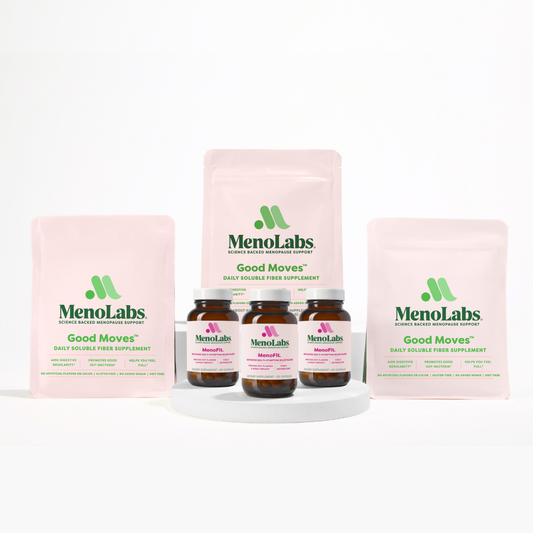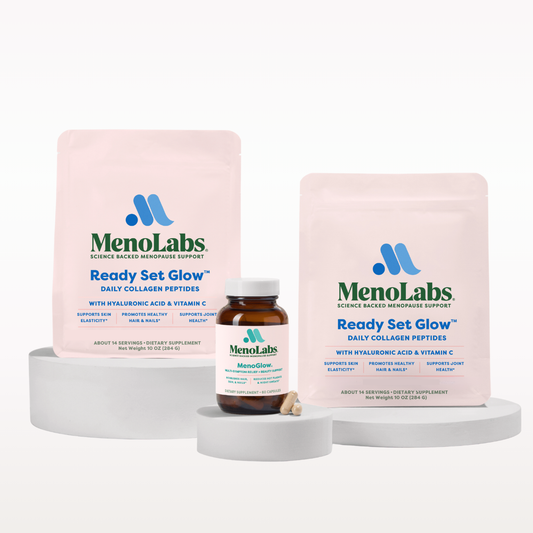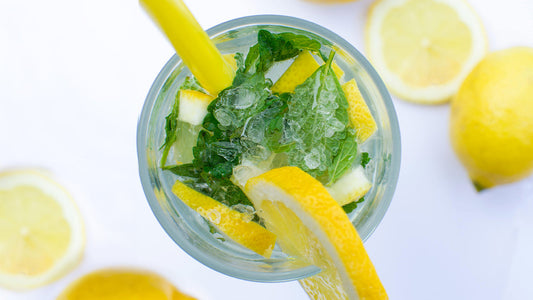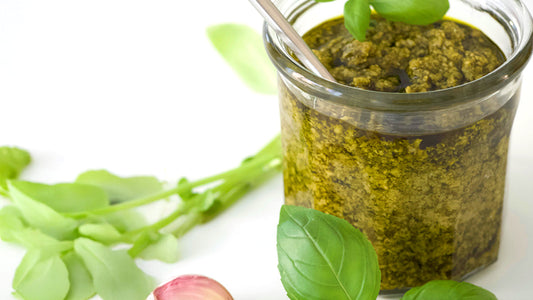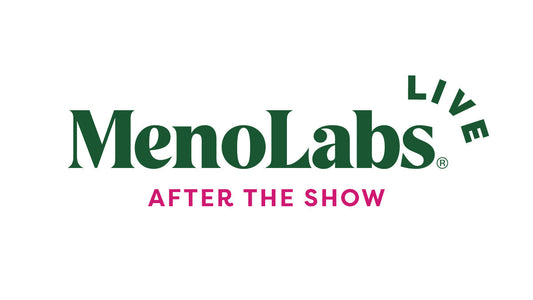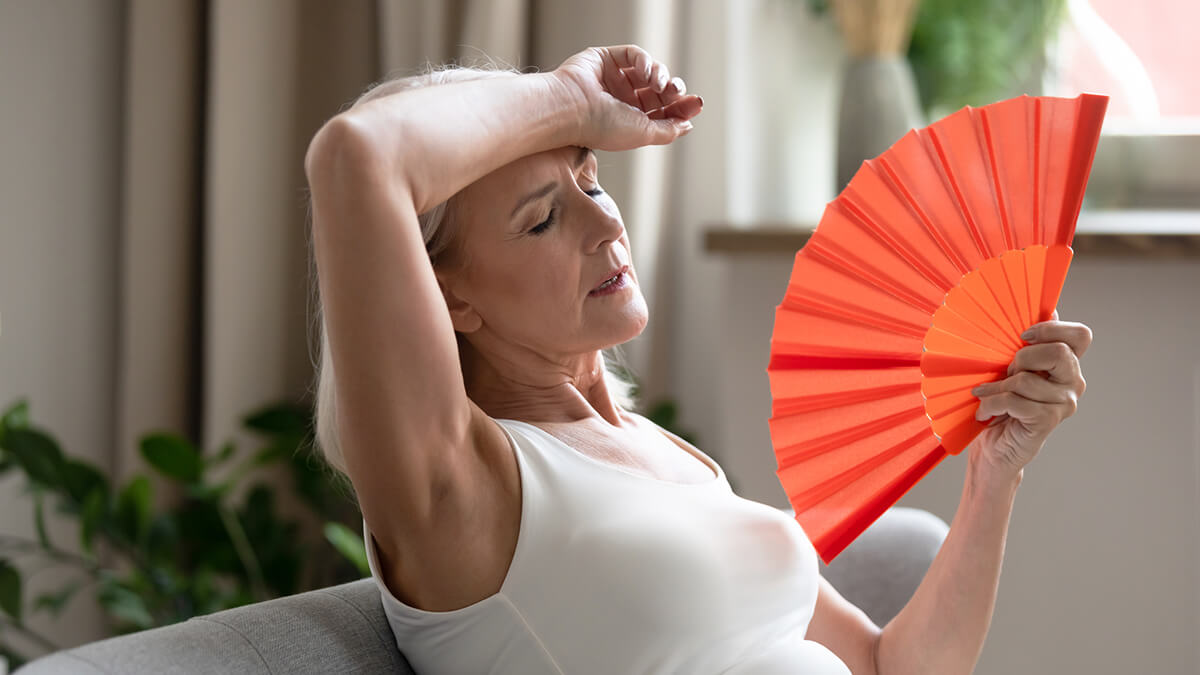
- Hot Flashes
- Perimenopause
- Stress
6 Common Hot Flash Triggers
Menopause symptom triggers like hot flashes and night sweats can be triggered by spicy food, alcohol, tight clothes and diet. Here are 6 common triggers to avoid and tips to...
1 min read
Hot flashes are uncomfortable and frustrating. They come on without warning and can last for long periods of time, making it nearly impossible to focus or perform daily tasks; in fact, many women in menopause report that their hot flashes are so overwhelming they have to stop everything they’re doing and sit absolutely still. This extreme rush of heat is often coupled with dizziness or sudden drowsiness, which only adds to the inconvenience. And 75% of women report hot flashes during peri/menopause — making them one of the most common symptoms.
Avoiding triggers is one of the best ways to reduce the chances of experiencing intense hot flashes. Luckily, hot flash triggers are easy to avoid once you know how to identify them.
What Are Some Common Hot Flash Triggers?
There are a few common hot flash triggers that women can easily identify and reduce their exposure to. Make note of your own reactions to these triggers, to find out which ones are most impactful for you.
1. Alcohol
Alcohol is one of the strongest hot flash triggers, especially if you drink very often. Alcohol causes something called vasodilation, which is the process of expanding blood vessels. When this expansion occurs, it causes a rush of blood to surge throughout the body, which naturally raises body temperature.

The area of the brain known as the hypothalamus is responsible for regulating body temperature. During menopause, the drop in the sex hormones, especially estrogen, affects the hypothalamus’ ability to regulate body temperature and registers even the slightest changes in temperature with extreme sensitivity. Alcohol raises your temperature and can cause the hypothalamus to cause a hot flash in an attempt to cool down the body with sweat.
2. Caffeine
Unlike alcohol, caffeine is a vasoconstrictor, meaning it narrows the blood vessels. But that doesn’t mean it can’t cause a hot flash. In fact, for many women, it still does. Caffeine is a stimulant, and like all stimulants, it raises heart rate and blood pressure, both of which can make you warmer. The hypothalamus registers this rise in body temperature as a threat to maintaining stability, and again, it triggers a hot flash to cool down the body through sweat released from the glands in the skin.
It also takes a long time for caffeine to be metabolized by the body. One six-ounce cup of coffee in the morning can take up to 12 hours for the body to metabolize and expel. This means that if you consume a lot of caffeine, even early in the day, the likelihood of experiencing multiple hot flashes throughout the day increases.
3. Spicy Food
Spicy food, though delicious, is another hot flash culprit. Chili peppers, jalapeños, and other hot peppers are also vasodilators. They raise body temperature by increasing the speed at which blood flows through the cardiovascular system. Additionally, spicy foods increase levels of hormones like adrenaline. When you eat something with spice, like an herb or a pepper, your brain registers the heat that your tongue experiences as if it is, quite literally, on fire. This causes your brain to warn the rest of your body to release adrenaline and decrease feelings of pain. However, this process is also a double-edged sword with unwanted side effects, as it causes both your heart rate and blood pressure to rise, which can cause a hot flash.
4. Warm Weather
Of course, the factors that cause a hot flash can’t always be easily controlled. Hot, humid weather is one of the biggest causes of hot flashes. When the weather is warm, the body has a hard time keeping itself cool. In a normal situation, our hypothalamus does what it does best and tells the skin to release sweat onto the skin’s surface to cool the body from the outside in.
For women in menopause, however, warm weather means that they may experience severe hot flashes more often throughout the day. It’s important to try to keep the skin as cool as possible on hot days. Using fans, ice packs, and drinking cold beverages when it’s hot out can help keep the severity of hot flashes at bay, even if it’s just for a little while.
5. Warm/Tight Clothes
As with warm weather, warm or tight clothes can also trigger hot flashes. Tight clothes create friction against the skin, which can not only be irritating to the skin’s surface, but also generates heat. When enough heat builds up near the skin’s surface, the hypothalamus begins to think that the body is overheating and reacts with a hot flash. Decreasing the amount of heat generated and insulated by your clothes can help you reduce the chances of experiencing numerous hot flashes throughout the day, or of having night sweats and insomnia. Wear looser-fitting clothes made out of a thinner, breathable fabric, especially when it’s hot out.
6. Stress
Stress is perhaps the most common and most difficult hot flash trigger to manage. When you experience stress, your body makes stress hormones like cortisol and adrenaline. When these hormone levels are high, they increase heart rate and blood pressure. These two processes lead to an increase in body heat and result in a hot flash. Finding ways to manage stress can be difficult, but effective stress management is one of your best tools for reducing hot flashes. Even taking a deep breath to slow a blood rush or making some lifestyle changes to lower anxiety can make all the difference for your side effects.
Related Products
Blend Besties Bundle
Fresh Start Bundle
4.7 / 5.0
(553) 553 total reviews







